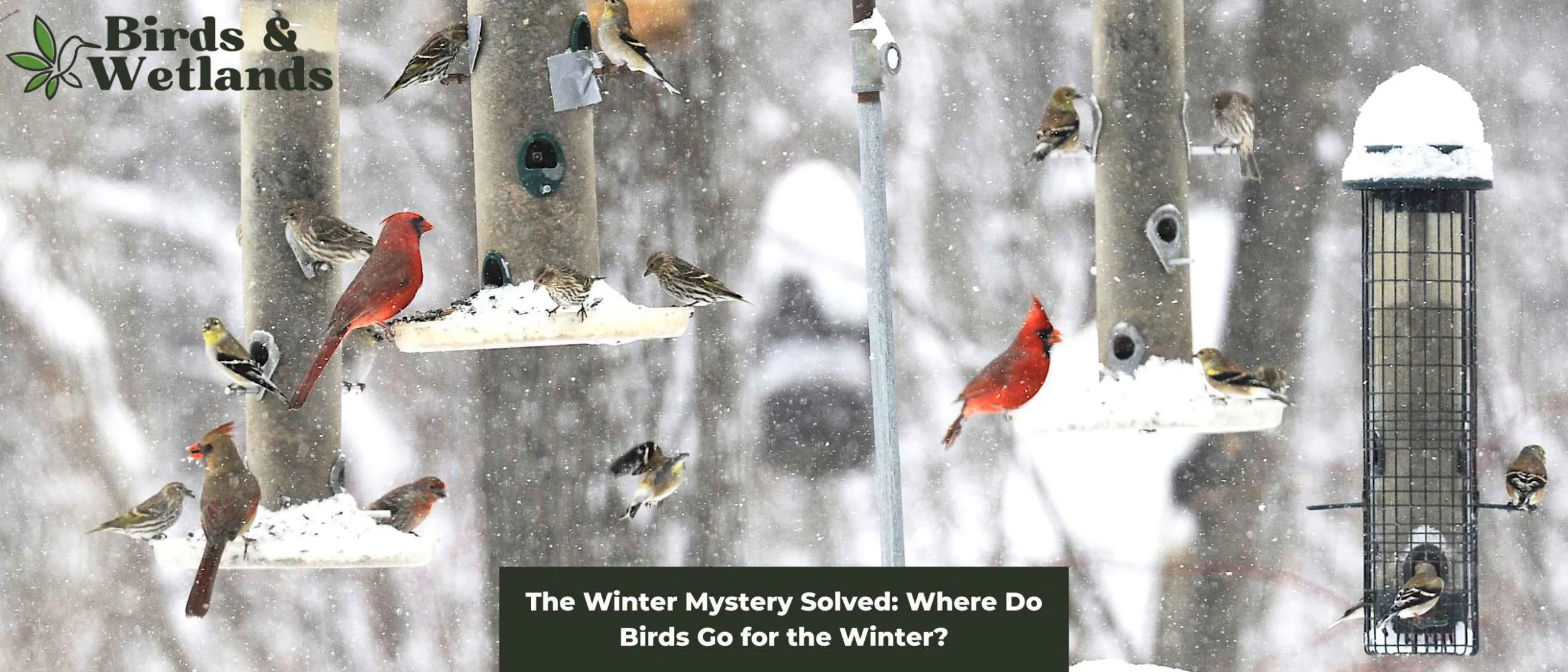Birds migrate in the winter to avoid harsh winter weather conditions, scarce food sources and to find areas with a more favorable climate. This survival strategy allows birds to breed and raise their young in areas where food is abundant, and the weather is mild.
Most migratory birds in North America typically fly south to the southern United States along the Gulf Coast. Other birds may travel as far south as Central and South America or the Caribbean. Some species of songbirds, waterfowl, and birds of prey travel thousands of miles each way during their migration, crossing entire continents and large bodies of water.
The exact location of each bird depends on several factors, including the species, the latitude, and the availability of food and suitable habitats.
Key Takeaways on Where Migratory Birds Go in the Winter
Where do birds go in the winter?

Many North American birds migrate to warmer climates during the winter to escape the harsh weather conditions and food availability. The migration patterns of birds vary greatly depending on the species and their natural habitats. Some birds migrate to the south, while others travel to the coastal regions.
One of the most well-known bird migrations in North America is the journey of the sandhill cranes, which travel from their breeding grounds in the northern regions of the United States, northern Canada and southern Canada to their winter habitats in the Pacific Northwest, southeastern Canada, British Columbia, Rocky Mountains, western United States, Mexico and other parts of Central America.
Some species of birds, such as the mallard duck and the American robin, do not migrate as far and instead move to coastal regions where food is readily available. These birds are known as partial migrators and may only travel short distances to find more hospitable habitats.
Migration also changes the birds’ behavior and diet. For example, some species of birds that feed on insect eggs during the summer months switch to a diet of fruits and seeds in the winter. The birds also adjust their behavior, becoming more solitary and less active during winter.
Do all birds migrate south in the winter?
There are multiple reasons why some birds migrate while others do not.
Birds that live in northern climates tend to migrate south during the winter, as cold temperatures can make it difficult for them to find food.
When the weather becomes too cold or too hot for a particular species of bird, they will typically migrate to more favorable climates that provide them with abundant resources.
Some birds may migrate to take advantage of longer days during springtime or shorter days in winter, as they need light for navigation.
Migration also provides birds with the chance to breed in areas that are more suitable for nesting and nurturing young. For example, many ducks will migrate north over vast distances to reproduce successfully in areas with fewer predators.
On the other hand, many birds have adapted their behavior, so they don’t need to go through the energy-consuming migration process. These non-migratory birds usually live in habitats with milder climates that are less affected by seasonal changes and, as such, provide them with a steady source of food throughout all four seasons.

Another strategy adopted by non-migratory birds is storing sufficient amounts of food ahead of time, thus reducing their reliance on external sources and maintaining them through prolonged periods when their environment may be hostile or lacking resources necessary for survival.
In contrast, migratory birds that are long distance migrants normally follow predetermined flight paths known as flyways which often span thousands of miles from one continent to another during their annual journey in search of favorable conditions. While flying these long distances, they rely mostly on intuition rather than conscious navigation skills.
Meanwhile, non-migratory birds stay within a relatively smaller range and keep close track of changes occurring around them as part of their adaptive behavior, which helps them quickly adjust to any alterations affecting their surrounding environment.
These migrating birds return to their breeding grounds from their wintering grounds in early spring to mate.
What are the non-migratory birds in North America?
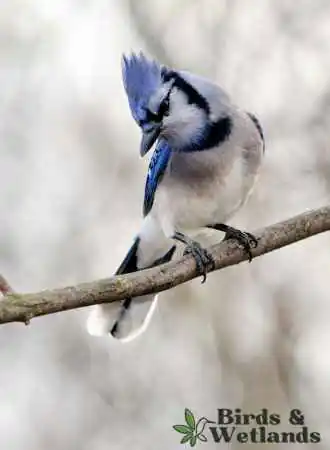
North America is home to common backyard birds that don’t migrate, despite being a continent comprised mostly of seasonal climates. Good examples of these permanent residents are mixed flocks of blue jays, common ravens, chimney swifts, pileated woodpeckers, black-capped chickadees, northern mockingbirds, downy woodpecker, Carolina wrens, sparrows and other hardy corvids. Some Canada geese are also non-migratory.
Some birds of prey and scavenging birds such as black vultures, crested caracaras, great-horned owls, barred owls and screech owls. Game birds such as wild turkeys, ring-necked pheasants, chukars, the greater sage-grouse and other species are also year-round residents.
Generally speaking, these non-migrating birds have adapted to either year-round moderate or seasonally variable temperatures by creating microclimates that are separate from their surrounding environments.
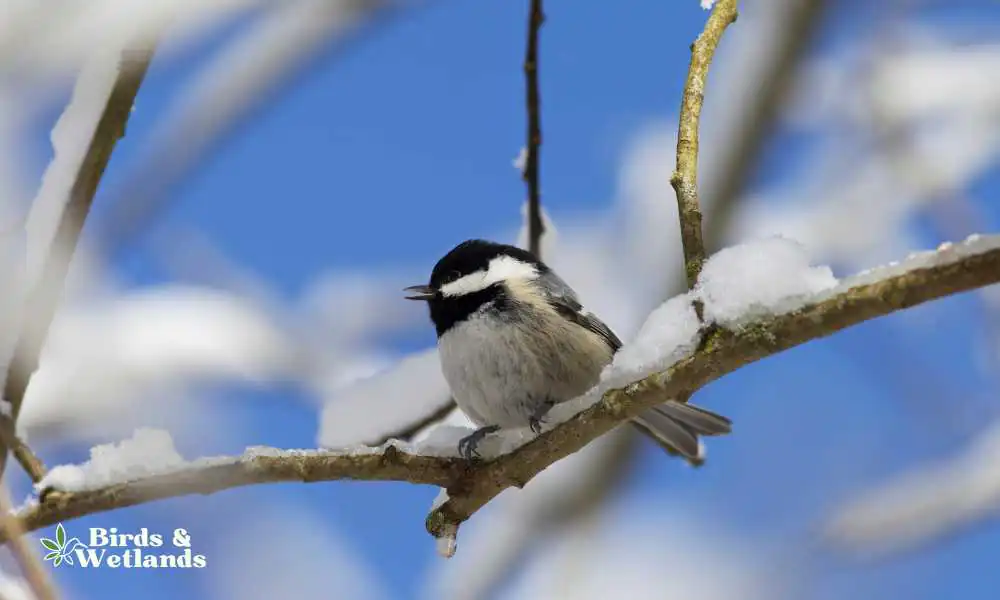
In other words, these resident birds live in habitats that don’t reach dangerously low temperatures even during colder winter months and stay warm enough through summer that they don’t need to migrate away from them.
Large flocks of these small birds remain sedentary due to their reliable food resources throughout the year or quick access to these foods after minor fluctuations in climate, while other birds may travel short distances to search for richer food sources. Most birds have also adapted to changing food preferences.
Some year-round residents of extreme northern habitats will molt in late summer and early fall near their usual nest boxes and nesting areas. At that time, they will get an additional coat of insulating down feathers to assist them retain body heat and withstand extreme cold.
If you want to help these birds out, you can put backyard feeders out in the winter.
Do northern cardinals migrate in the winter?
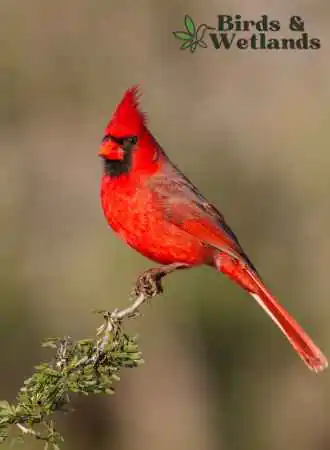
The northern cardinal is a popular bird species in North America, primarily in the eastern and central parts of the continent. The male northern cardinal is well known for its bright red feathers, black facial mask and bold personalities, making it a popular backyard bird for bird watchers and bird feeders.
One of the key reasons why these beautiful birds do not migrate like many other bird species is their ability to adapt to changing environments and climates. They have several adaptations that enable them to do this, including their ability to fluff up their feathers to trap warmth and find food even in snowy conditions.
Northern cardinals also have a well-established year-round food source, which allows them to remain in the same area throughout the year. They primarily feed on seeds, fruit, and insects and prefer sunflower seeds, safflower seeds, and suet. This steady food source is critical for their survival during the winter months when food is often scarce for other bird species.
How do birds not freeze in winter?
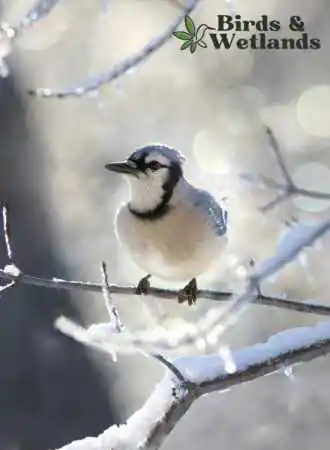
Birds can withstand freezing temperatures in the winter through various mechanisms that help them regulate their body temperature and conserve energy. These adaptations allow birds to survive and thrive even in harsh winter environments.
First, birds have a high metabolic rate that generates heat and helps to keep their body temperature constant. This increased metabolism is made possible by the large amount of energy birds need to consume to fly and maintain their body weight. A faster metabolism generates more heat, which helps to keep birds warm, even in freezing temperatures.
Second, birds have a dense layer of feathers that helps to insulate their bodies and trap heat. Feathers are a very effective insulator, as they trap a layer of still air next to the bird’s skin, which acts as a barrier to heat loss. Some birds will fluff up their feathers to create an even thicker layer of insulation, trapping even more heat and helping to reduce heat loss.
Third, some birds also have a layer of down feathers that help to provide additional insulation. These feathers are fluffy and lightweight, which makes them excellent at trapping air and retaining heat. Some birds, such as penguins and some waterfowl, have thick layers of down feathers that help keep them warm in extremely cold weather conditions.
Fourth, birds have a unique circulatory system that helps to conserve heat. In many birds, the blood vessels in their legs and feet are arranged in a way that helps to reduce heat loss.
This is because the blood vessels near the skin’s surface are positioned close to the veins, which carry blood back to the heart, and far from the arteries, which carry blood away from the heart. This arrangement helps to prevent heat loss through the extremities, which are often the first parts of the body to lose heat in cold temperatures.

